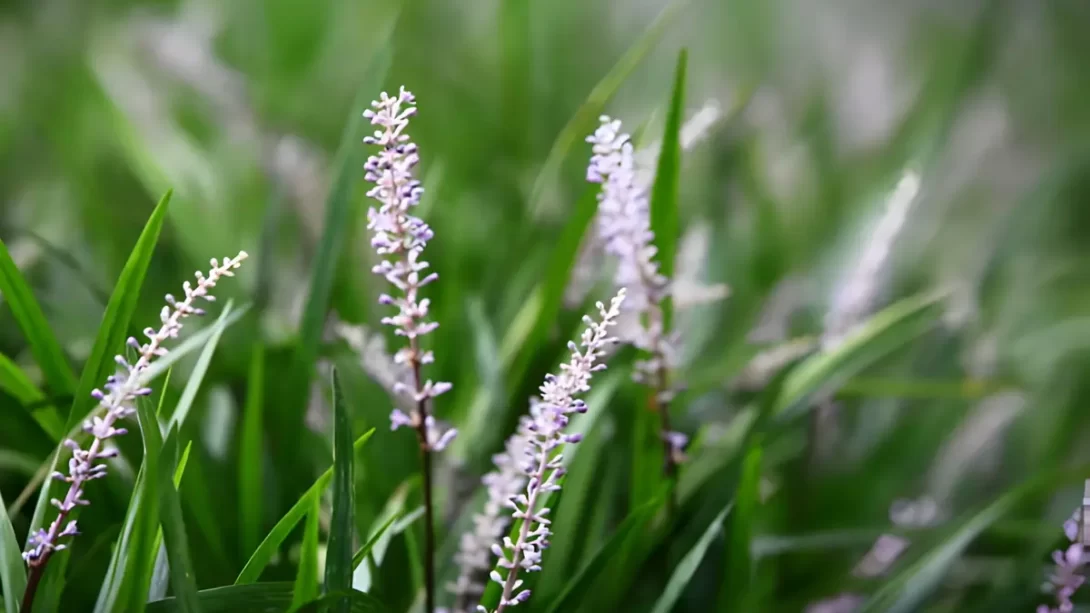Liriope, commonly known as Lilyturf, is a popular choice in gardens and landscaping for its hardy nature and attractive foliage. Despite its widespread use, pet owners, particularly those with dogs, often raise concerns about the safety of this plant. Understanding whether Liriope is toxic to dogs is crucial for creating a pet-friendly garden environment. This article seeks to address these concerns, providing dog owners with essential information on Liriope and its effects on canine health.
Liriope
Liriope, specifically Liriope spicata, is known for its grass-like appearance and is often used as a ground cover or border plant in gardens. It’s characterized by its long, narrow leaves and small purple or white flowers that bloom in late summer. There are several varieties of Liriope, including both clumping and spreading types, making it versatile for different landscaping needs. This plant thrives in a variety of conditions but prefers partial shade and well-drained soil. Due to its adaptability and low maintenance requirements, Liriope has become a favorite among gardeners.
Toxicity in Plants
When considering the safety of any plant for pets, it’s important to understand the concept of plant toxicity. Toxicity in plants can vary greatly, with some plants containing compounds that are mildly irritating to pets, while others may contain toxins that can cause serious health issues. Dogs, in particular, can be sensitive to certain plants, and their curious nature often leads them to chew on or ingest garden foliage. Identifying which plants in your garden are potentially harmful to dogs is a key step in preventing accidental poisoning and ensuring a safe environment for your furry companions.
Is Liriope Toxic to Dogs?
Regarding the specific question of Liriope’s toxicity to dogs, the answer requires careful consideration. While Liriope is not commonly listed among the most toxic plants for dogs, it is not entirely free of concern. Some reports suggest that it may cause mild stomach upset if ingested. However, compared to other more notoriously toxic plants, the risk posed by Liriope is relatively low. This does not mean it is entirely safe, as individual dogs may have varying sensitivities to different plants.
Symptoms of Liriope Toxicity in Dogs
If a dog ingests Liriope, the most likely reaction would be gastrointestinal in nature. Symptoms could include vomiting, diarrhea, or a general upset stomach. These signs are typically mild and often resolve on their own. However, if a dog shows severe symptoms such as prolonged vomiting, significant discomfort, or lethargy, it is important to seek veterinary care. The severity of symptoms can vary based on the amount ingested and the individual dog’s sensitivity.
Preventative Measures for Dog Owners
For dog owners who have Liriope in their garden, there are several preventative measures that can be taken. Firstly, it’s essential to supervise pets in the garden, especially if they have a tendency to chew on plants. Creating physical barriers around Liriope or planting it in areas less accessible to dogs can help prevent accidental ingestion. Additionally, training dogs to avoid certain plants or areas in the garden can be an effective strategy. For those who are concerned about any risk, replacing Liriope with known non-toxic plant alternatives can be a safer choice for pet-friendly landscaping.
First Aid and Treatment
If you suspect your dog has ingested Liriope, the initial response should be to monitor their behavior closely for any signs of discomfort or illness. In cases of mild symptoms like slight stomach upset, ensuring your dog has access to plenty of water and a quiet place to rest may be sufficient. However, if symptoms escalate or persist, it is essential to seek veterinary assistance. A veterinarian can provide appropriate treatments, which may include administering medication to ease gastrointestinal distress or, in more severe cases, more intensive care. It’s always better to be cautious and consult a professional when it comes to the health and safety of your pet.
Alternative Pet-Safe Plants
For those looking to avoid any potential risk, there are many pet-friendly alternatives to Liriope. Plants such as Creeping Thyme, Blue Fescue, and Irish Moss are excellent choices for ground covers that are generally considered safe for dogs. When selecting plants for a garden where pets are present, it’s always advisable to do thorough research or consult with a professional to ensure their safety. A pet-friendly garden doesn’t have to compromise on beauty or functionality.
Conclusion
In conclusion, while Liriope is not ranked high on the list of toxic plants for dogs, it does pose a slight risk, particularly for dogs that are prone to eating plants. Awareness and prevention are key in ensuring the safety of your pets. By employing preventive strategies, monitoring your dog’s behavior, and being prepared to respond if ingestion occurs, you can enjoy the benefits of this versatile plant while keeping your furry friends safe. Creating a pet-friendly garden is a thoughtful process, and with the right choices, it can be a harmonious and safe space for all family members, both two and four-legged.



